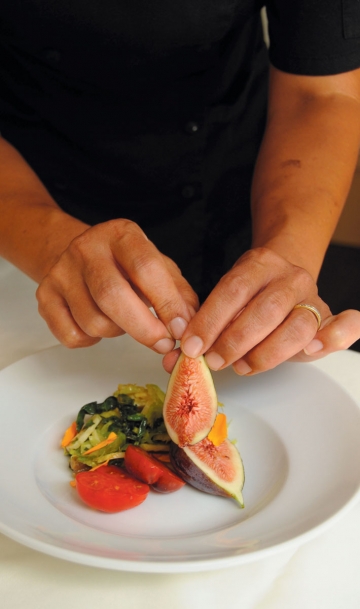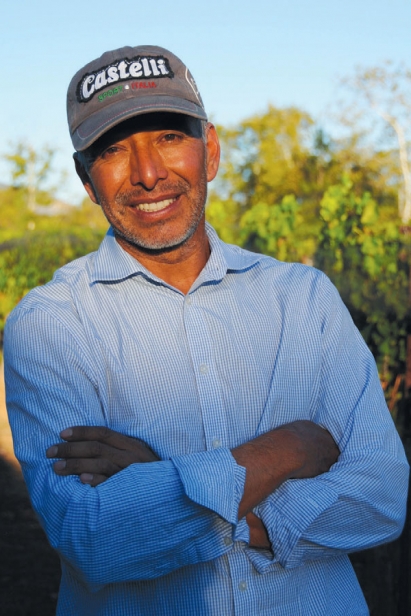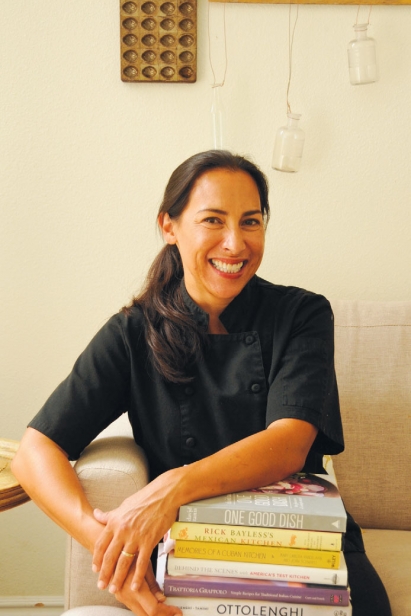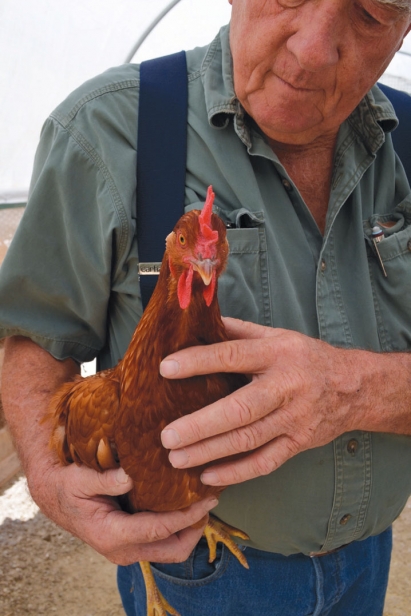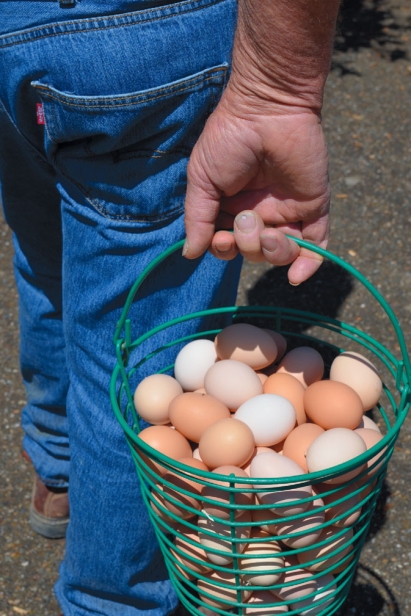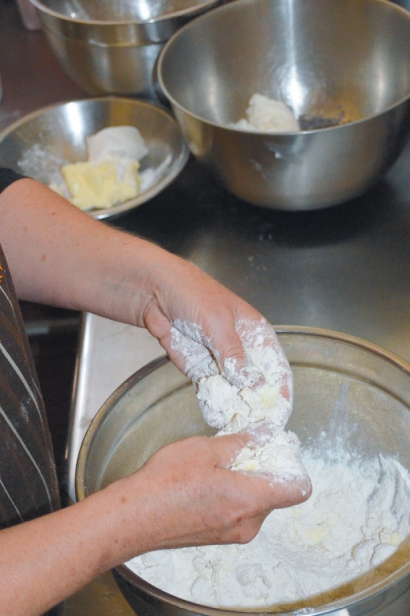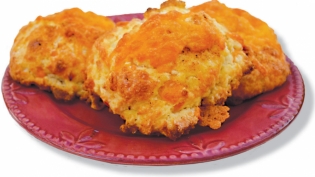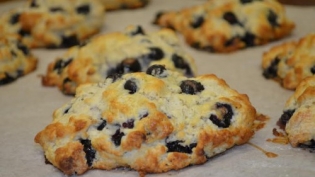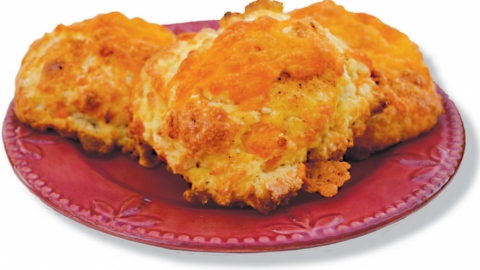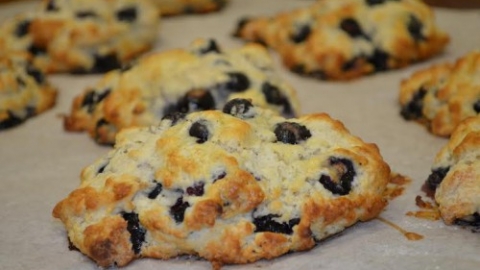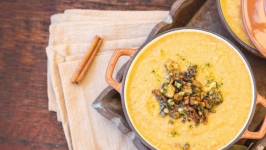The Human Touch
Professionals’ hands are important tools of their trade
Like so many people, I use my hands all day, every day. But I didn’t give them much thought as tools until I spent time with a local viticulturist, boutique bakery owner, egg farmer and full-service caterer. While their jobs are diverse, they share one thing: They rely on their hands to twist, stir, tie, hold and perform myriad other tasks.
They may use manufactured tools to help, but it’s their two hands, 10 fingers, that translate their passion for their jobs into tangible products we can all enjoy.
Gabrielle Moes, Seasons Catering
I ask Gabrielle Moes if she has beautiful hands. No, she says. Not anymore, she adds with a laugh.
“My hands tell my story—burns, calluses, scars, no nails …,” she says, casually taking inventory of her well-tended hands with their long fingers and clean, short nails. They have “lots of wear and tear,” she explains.
But her hands are beautiful: strong, resilient, reliable.
The classically trained chef and owner of Seasons Catering in Ventura says her hands deal with all of the elements of the business, from lifting heavy items to being her thermometer. She can tell when meats are cooked by how they spring back when touched. Gabrielle mentions that her husband says she has “asbestos fingers”—she can pick up items the rest of us would deem too hot without utensils or an oven mitt.
All the detail work she does comes from delicately grasping and shaping items using every aspect of her hands. For these tasks, it’s important to have sharp senses and a steady hand. Since we eat with our eyes, she says, plating presentation is everything.
For precision work, she relies on her tweezers, which are an extension of her fingers. Together they lift and place a flower petal, say, in just the right spot on a plate.
Along with everything her hands do, Gabrielle says she washes them 30 times a day.
The Ventura County native’s 15-year-old catering business not only encompasses her hands, but the hands of eight full-time employees, eight part-time employees and wait staff.
Gabrielle says she has an incredible team of well-rounded professionals. And she points out that carefulness and safety is always a concern. “If someone has a hand injury it affects the way things are done. Without the full usage of our hands we lose the vital skills to perform our job.”
Martín Ramírez, The Vineyards of Ojai
Heavy mist covers the serene upper Ojai Valley the day I visit Martín Ramirez. Together we survey several rows of grapevines on the Roll Ranch vineyard he created from the ground up, roughly 24 years ago.
To me, they are healthy vines with vibrant green leaves. As the owner of The Vineyards of Ojai, a vineyard management company, Martín sees so much more: the balanced ecosystem that produces the grapes for tomorrow’s wine.
As a leading viticulturist in the county, Martín says tending to the vines is all about hard work and working with your hands, from the spring budding to winter pruning.
These skills take years to learn, he says, and since the focus is on hands, he admits only a handful of people are trained to do this type of work.
From thinning the vines’ leaves, shoots and clusters to weed abatement and harvesting, I thought tending to vines would be hard on his hands. But upon inspection, Martín’s hands appear soft and injury- free, certainly proving it is not the case.
Providing a delicate touch to care for plants is vital to their survival and ability to produce a good harvest. Even the netting that covers the vines to protect the grapes from birds is light.
He demonstrates how delicate the grape tissues are by gently maneuvering each shoot into the wires training them upward only, one at a time with relative ease so they will get more sunlight. His agile touch completes each task effortlessly, as though his fingers automatically know what to do.
When harvesting grapes, his fingers wrap around a type of pruning shear that when placed around the clusters cuts them from the vine with a slight pressure and twist of the wrist. The clusters are placed into buckets and loaded into picking bins that are transported to the winery.
Martín says he had never given much thought to how important hands were to his trade. “I thought it was more about my mind,” he says, finding it difficult to explain. It’s more about translating the thought to the hands on how to do a task, he explains.
Working 10-hour days, seven days a week during the harvest, Martín says the work is not physically demanding but it takes a delicate touch. Even so, he says he has little desire to go anywhere else. “I’m so deeply in love with this land and its surroundings,” he says. “Why would I want to leave?”
Bob Shepherd, Shepherd Farm
A fixture at several Ventura County certified farmers’ markets, Bob Shepherd loves to interact with customers as he and his wife, Barbara, sell eggs from their Fillmore farm.
Looking at his tanned arms and large, weatherworn hands, it might be hard to believe they help to produce something as delicate as an egg. A simple handshake demonstrates the careful touch he has, as does watching him gently cradle a chicken and stroke its neck.
For him, it’s not about producing any egg; it’s about producing “as good an egg as you can.” Bob says there is passion and finesse needed to produce eggs. It’s about common sense and having a delicate touch—and the ability to keep up with the demand.
With a few exceptions, the complete hands-on operation starts with the care of seven breeds of hens in one of eight moveable paddocks throughout the certified organic orange grove. (The flock of about 2,000 chickens grazes on pasture grasses growing naturally between rows of orange trees.)
Eggs are collected two to three times a day, all by hand. Bob says he and the few other people who work the farm collect eggs by reaching under the hens and removing them as gently as possible and placing them in wire baskets that look like those used for range balls at the golf course.
“Most of the time the hens are compliant,” he says, but occasionally they’ll show their displeasure by pecking at hands and arms. He points out a number of scars he’s received over the years.
Bob has always enjoyed working with his hands, he says. Describing how he relies on them for his livelihood, and seeing him survey them as he talks, Bob seems to appreciate his hands in a matter-of-fact way.
There is an interesting juxtaposition between watching him cut and hammer as he builds farm structures and looms for weaving, and his gentle handling of the baby chicks in the brooders, gathering eggs and tending to the hens.
Bob is a strong believer in his chickens’ eggs and the health of ingredients people eat to fuel their bodies. He also believes in the importance of the earth as a life source. The product of his handwork is a prime example.
Nancy Pedersen, Sunflowers on the Square Kitchen and Bakery (Now Closed)
In the tiny kitchen of Sunflowers on the Square Kitchen and Bakery in downtown Ventura, many of owner Nancy Pedersen’s small-batch baked goods are literally handmade.
“Creating something with your hands is very therapeutic and it also makes you stay focused and present,” she says.
On this particular Friday, Nancy is preparing “biscones,” a biscuit-scone hybrid. Her smooth hands move nimbly from measuring one ingredient to another as she begins the process.
With knife in hand, Nancy rhythmically slices the chilled butter into smaller bits and adds them to the flour mixture. Fingers deftly moving from chunk to chunk, she breaks the butter down to irregular pea-size pieces for a flakier, more tender end product.
Cutting the butter into the mixture with her fingers allows Nancy to feel and isolate the big chunks, working them further into the mixture more evenly. This process offers her a connection with the dough, giving her more control of the consistency.
“You can’t feel what’s happening with the dough or the mix when using the pulse button on a food processor; it is harder to see the change in texture because it is faster and, therefore, much easier to over process than using your hands,” she says. “Plus, [mixing by hand] is more fun.”
Using her right hand as a whisk—her left steadying the mixing bowl—she incorporates the remaining ingredients. The dough comes together quickly. Hers is an efficient process, practiced over countless batches, that leaves her hand covered in a shaggy mass.
Cleaning her hand, she switches to an ice cream scoop to place the biscones on the baking sheet and paints them with an egg wash. A sprinkle of sugar across the tops follows before the pan goes into the oven.
Making baked goods the way she does is very manual, Nancy says, much like how our ancestors did it.
“I found myself at a relative’s house and their mixer was on the blink,” she explains. Needing to whip a dozen egg whites to stiff peaks for a cake, she thought she’d have to abandon her plans. “I reminded myself that cakes and meringues were being made long before the electric mixer came on the scene.”
Amy Stroba of Fillmore uses her hands to tap out freelance articles. She is a former special sections editor at the Ventura County Star.


